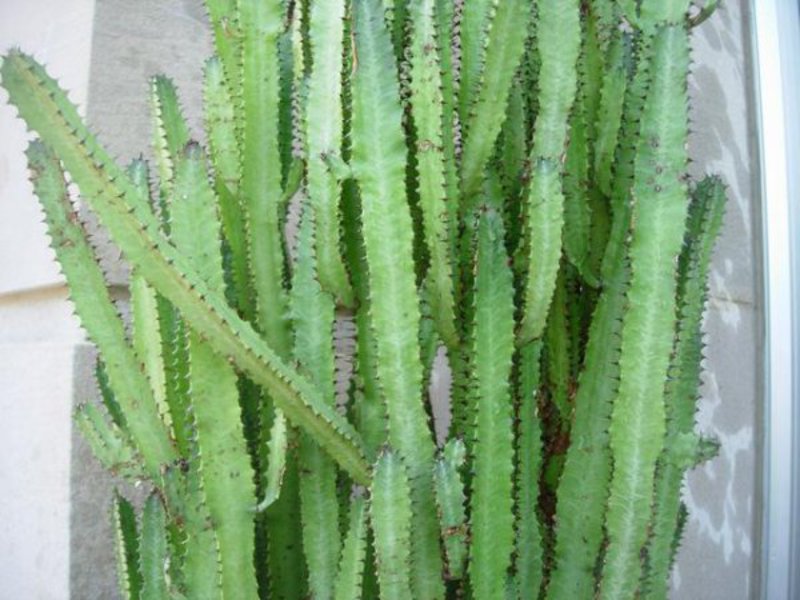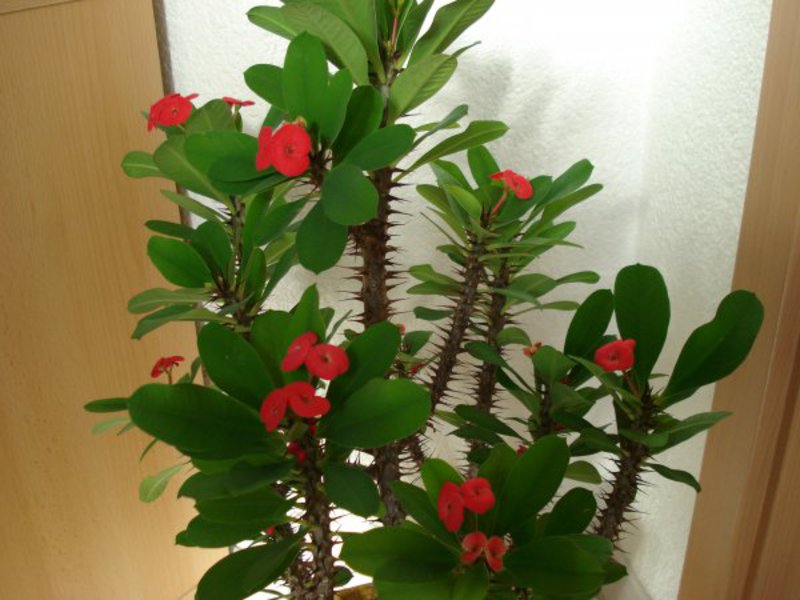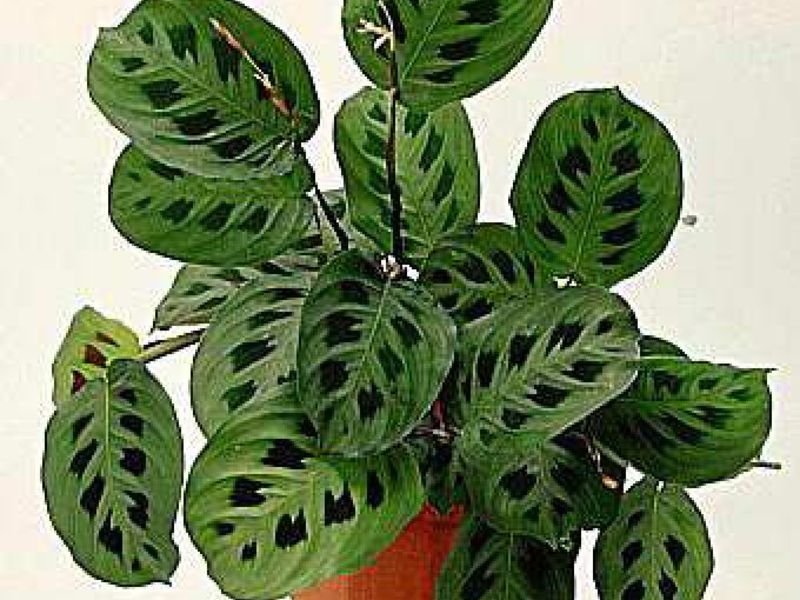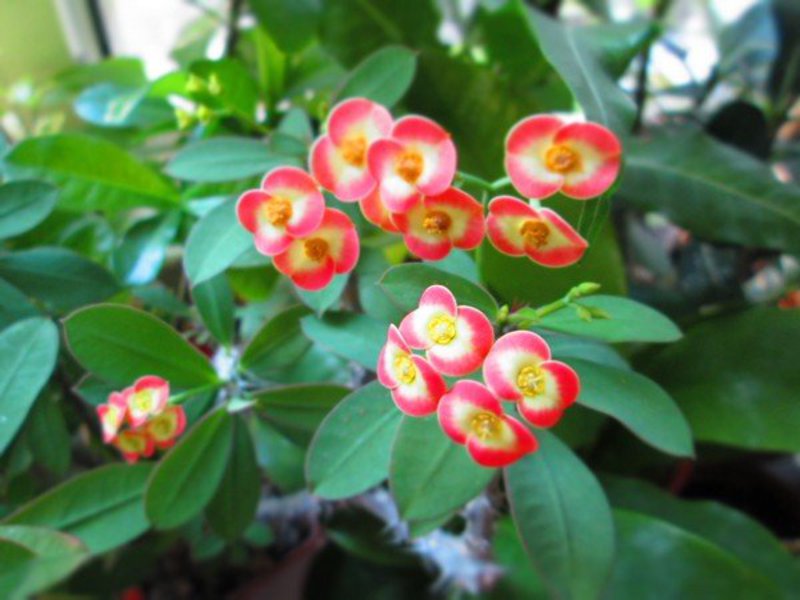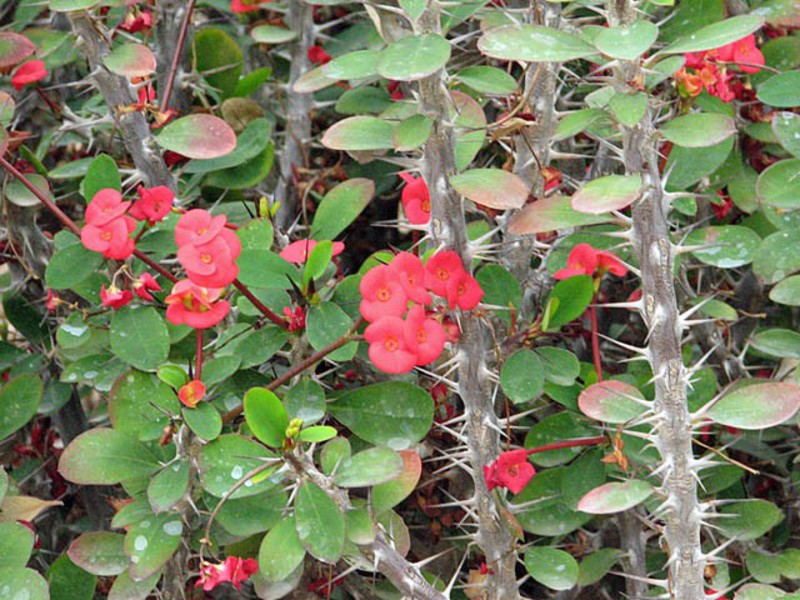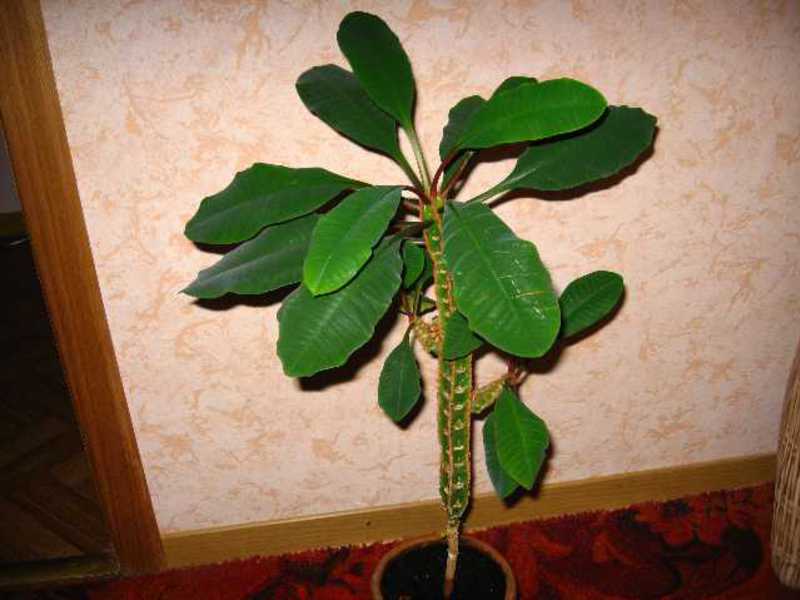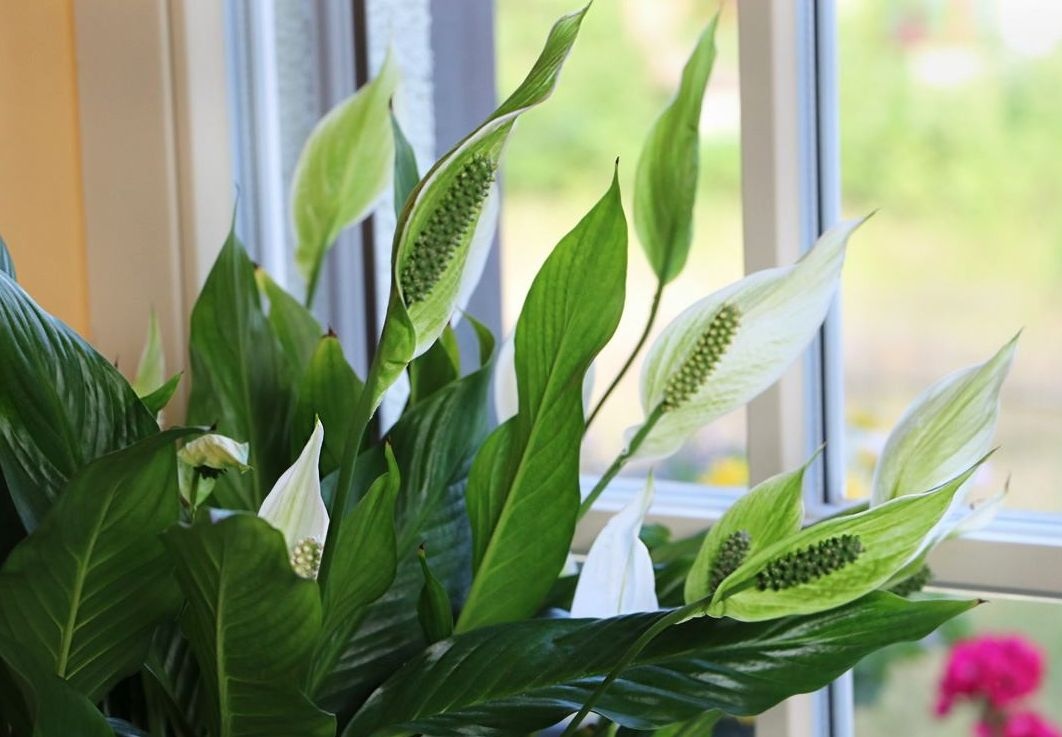If you look into any room, be it an office or a residential building, then you can definitely find a houseplant there. These plants play a very important role, since a beautiful green corner can be created on the basis. However, despite all their benefits, it must be borne in mind that there are also such plants that are capable of causing harm.
Content
List of poisonous plants
If you are going to acquire houseplants, then it may not hurt you to find out which ones can harm you.
- Dieffenbachia... This houseplant has large mottled leaves. It belongs to the number of tall and can grow up to 2 m. The sap of this plant is a great danger, because of the toxicity of which a person can get burns if this substance is on the skin;
- Fat adenium. This plant has a fairly strong stem right at the base. It contains a poisonous substance, upon contact with the mucous membrane or human skin, serious poisoning may occur. This flower has received application in pharmaceuticals, where it is used for the manufacture of drugs against arrhythmias;
- Ficus. It can be found in the apartments of many florists. And not everyone understands that it can be dangerous. First of all, the leaves and stems of the plant can cause harm. When a small amount of ficus juice gets on the skin, a person's reaction can be varied: in addition to irritation and allergies, blistering is possible;
- Spurge. This plant is dangerous because of its milky sedge, when it gets on the skin, red spots are formed, a burning sensation appears and blisters appear. Especially it is necessary to protect from contact with eye juice, because otherwise it can lead to temporary blindness. If a person swallows a few drops of milkweed juice, he may feel severe stomach discomfort, sometimes he may complain of vomiting and diarrhea. The consequences can be even more serious in case of severe poisoning, since in this case the blood circulation process can be disrupted, convulsions and dizziness appear;
- Indoor hydrangea. One of the famous houseplants that requires special care. Any part of the hydrangea is dangerous to humans. And if simple contact with the leaves does not lead to complications, then when this plant penetrates into the body, a person begins to notice a deterioration in his health. The main symptoms of poisoning are increased sweating, impaired blood circulation, itching and painful discomfort in the stomach;
- Luxurious gloriosa. Despite its beauty, for a person who is unfamiliar with this plant, it can be dangerous. If you swallow a large enough amount of gloriosa juice, then soon a person may feel a serious deterioration in well-being. In some cases, the kidneys can be affected, and sometimes it can lead to hair loss;
- Beautiful brovallia. This beautiful name hides a rather dangerous flower. In this plant, any part of it is poisonous.Trouble begins at the moment the poisonous substance enters the skin, which leads to intoxication;
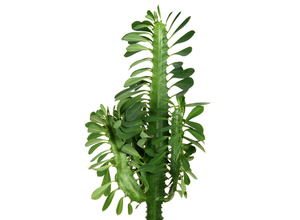 Clivia. This houseplant transforms significantly when it begins to bloom. However, if you do not know about its features, then a person may face certain problems when he comes into contact with his root system and leaves. Clivia contains a poisonous substance, upon contact with which a person may feel increased salivation, diarrhea and vomiting. Situations are known when this plant became the cause of the appearance of paralysis;
Clivia. This houseplant transforms significantly when it begins to bloom. However, if you do not know about its features, then a person may face certain problems when he comes into contact with his root system and leaves. Clivia contains a poisonous substance, upon contact with which a person may feel increased salivation, diarrhea and vomiting. Situations are known when this plant became the cause of the appearance of paralysis;- Monstera. Among all other indoor plants, this flower stands alone. It is distinguished by large leaves that are a threat to humans. The veins of the leaves contain a poisonous substance that, if it gets on the skin, can lead to red spots, burns, and sometimes swelling of the skin. No less dangerous is the contact with the eyes, since in this case temporary blindness may occur, as well as other unpleasant consequences;
- Azalea. This plant strongly resembles a house lily, as its flowers have the same shape and color. However, you need to be very careful with the nectar and leaves of this plant. If they enter the body, a person may feel significant changes in health: discharge from the nose, vomiting and lacrimation may appear.
Therefore, if you are looking for indoor plants for your home, then at first it does not hurt to learn more about their features and conditions of detention. It is necessary strictly observe safety measures when caring for plants. If you have bought the most poisonous flowers in your house, for example, a tarakar, then they must be placed as far as possible from children.
Danger of poisonous plants
A person can get hurt not only after contact with the whole plant, but also a small part of it. It can be not only juice, but also berries, flowers, roots, bulbs and leaves.
"Don't go, children, to walk to Africa" - a list of the most poisonous plants in the world:https://flowers.desigusxpro.com/en/dikorastuschie-rasteniya/samoe-yadovitoe-rastenie-v-mire.html
Plants with poisonous sap
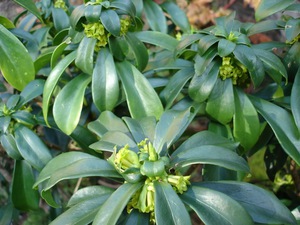 First of all, this group should include flowers of the euphorbia family... The resins of most of its representatives contain toxic substances, if they enter the body, severe poisoning can occur. The characteristic symptoms of intoxication are mild irritation, burns, and sometimes ulcers.
First of all, this group should include flowers of the euphorbia family... The resins of most of its representatives contain toxic substances, if they enter the body, severe poisoning can occur. The characteristic symptoms of intoxication are mild irritation, burns, and sometimes ulcers.
The juice of euphorbia can bring serious harm to a person if it gets on the mucous membrane. In this case, inflammation of the eyes and mouth can begin. No less pleasant consequences are indigestion and nervous activity. The cell sap of some members of the aroid, kutrovy and amaryllis family has a similar effect.
Plants with poisonous organs
One of the brightest representatives of this family are flowers with poisonous berries from the nightshade family. First of all, you need to be careful with beautiful orange and red berries for children, who at the sight of these tempting fruits will surely have an irresistible desire to taste them. Among the kutrovy family, there are also such flowers in which flowers and leaves are dangerous. Of these, oleander can do the most harm. If these parts of the plant are swallowed, it can lead to impaired cardiac activity.
Also, among the poisonous domestic flowers, there are such specimens that only conditionally pose a danger to humans. For example, some of them are flowers, which can harm allergy sufferers. Usually, discomfort occurs due to pollen of flowers, however, there are non-flowering plants that also capable of producing allergens... These are:
- geranium;
- ferns;
- oleander;
- some amaryllidaceae.
Allergy sufferers can suffer even when interacting with the ground in which indoor flowers grew. The fact is that in her microscopic fungi may remainleading to an allergic reaction.
Poisonous indoor flowers can harm not only allergy sufferers, but also ordinary people who do not have health problems and pets.
The deadly beauty of pink laurel. Why is such a beautiful and such poisonous oleander dangerous:https://flowers.desigusxpro.com/en/komnatnye-cvety/cvetok-oleandr-vyraschivanie-i-uhod-v-domashnih-usloviyah-foto.html
Security measures
 If you have poisonous indoor flowers in your home, then you need to pay special attention to small children and pets. In principle, children can be treated very simply by isolating them from flowers. However, no matter what you do with cats, you will most likely fail. These animals will be able to overcome all obstacles to get to the flower. In this case, one thing remains for you - to remove from your apartment once and for all potential sources of danger.
If you have poisonous indoor flowers in your home, then you need to pay special attention to small children and pets. In principle, children can be treated very simply by isolating them from flowers. However, no matter what you do with cats, you will most likely fail. These animals will be able to overcome all obstacles to get to the flower. In this case, one thing remains for you - to remove from your apartment once and for all potential sources of danger.
Although, if we talk about harm, then, as a rule, it comes from those flowers in which the aerial parts are poisonous. If you grow plants with poisonous tubers in the house, then, most likely, they will not pose a danger to both children and animals.
Care must be taken not only at the stage of growing poisonous flowers, but also during caring for them. If you have to interact with plants, for example, during transplantation, then you must work with rubber gloves. So you can protect your hands from the poisonous sap of plants. In addition, it is important to take care that so that the juice does not enter the eyes or mouth.
However, if, despite all the precautions, the poisonous juice gets on your skin or inside, then you need to do the following:
- if a poisonous substance gets on the skin, then it must be washed off with running water and soap;
- if the juice of the plant gets into the eyes, which is necessary no later than 10-20 minutes from the moment of infection, rinse the eyes under running water;
- if you accidentally swallowed a small amount of juice or part of a poisonous plant, then you should take a glass of water with activated charcoal. Or you will have to artificially induce vomiting so that a piece of a poisonous plant that accidentally entered the stomach leaves the body;
- if a large amount of a poisonous plant has entered your body, and you experience symptoms such as fainting, convulsions or heart palpitations, then you need to call an ambulance as soon as possible.
Conclusion
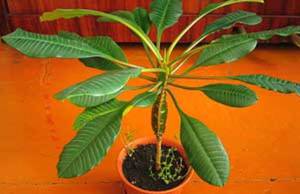 Growing indoor flowers is not always fun. If poisonous plants grow in the house, then this is fraught with great worries for the owner. It is necessary to constantly monitor that they do not harm small children or animals. Therefore, you have to pick up the safest flowers to grow... However, even in this case, it is not always possible to guarantee that these plants will not cause poisoning. In this case, you will have to prepare for such unforeseen situations, having become familiar with the basics of first aid.
Growing indoor flowers is not always fun. If poisonous plants grow in the house, then this is fraught with great worries for the owner. It is necessary to constantly monitor that they do not harm small children or animals. Therefore, you have to pick up the safest flowers to grow... However, even in this case, it is not always possible to guarantee that these plants will not cause poisoning. In this case, you will have to prepare for such unforeseen situations, having become familiar with the basics of first aid.
